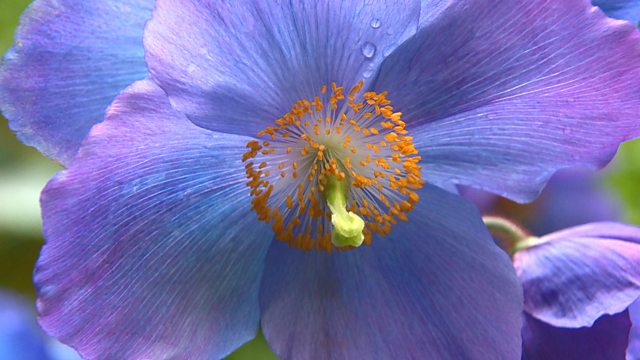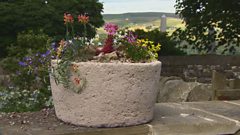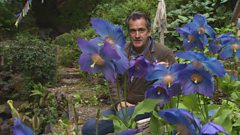
Episode 16
Plants that have a head for heights come under the spotlight this week. At Craigieburn Garden in the Scottish Borders, Gardeners' World discovers a unique collection of Himalayan plants and visits a nurseryman in Hebden Bridge who has been growing alpines since he was a teenager.
Last on
Clips
-
![]()
How to make an alpine trough
Duration: 03:58
-
![]()
Himalayan plant treasures
Duration: 02:32
Food for bees

Bees obtain their food from nectar and pollen produced by flowers. Some plants produce a lot of this, whilst others produce nothing at all. The greater the number of suitable flowering plants in your garden the better. If space allows, try to grow several of the same type of plant, as planting in drifts helps the bees find their food. A range of flower shapes is important too. Shallow, open flowers enable short-tongued bees to access their food, while tubular flowers are better for those with longer tongues.
Here are our top 10 nectar-rich plants that flower at this time of year:
- Anise hyssop (Agastache foeniculum)
- Annual lavatera (Lavatera trimestris)
- Borage (Borago officinalis)
- Butterfly bush (Buddleja davidii)
- Catmint (Nepeta x faassenii)
- Large blue alkanet (Anchusa azurea)
- Lavender (Lavandula angustifolia)
- Rosemary (Rosmarinus officinalis)
- Thyme (Thymus species)
- Viper’s bugloss (Echium vulgare)
(www.rhs.org.uk)
Alpine nursery featured
Slack Top Nursery
Alpine House
22A Slack Top
Hebden Bridge
West Yorkshire
HX7 7HA
Tel.
01422 845348
(www.slacktopnurseries.co.uk)
Himalayan garden featured
Craigieburn
Garden
Moffat
Dumfries & Galloway
DG10 9LF
(craigieburngardens.co.uk)
Jobs for the weekend: Thin developing apples
In early summer, many trees will naturally shed their fruit, a phenomenon known as the ‘June drop’. Despite this, in a good growing year, a fruit tree may still carry too many fruitlets which, if left, will develop into small fruit. With apples, thinning these fruitlets to two per spur will help to improve their final size.
(www.rhs.org.uk)
Jobs for the weekend: Harvest garlic
Garlic is ready to lift as soon as the foliage starts to turn yellow. Using a fork, gently lever the plants out of the ground and allow them to dry thoroughly until the leaves start to rustle. Thereafter, store somewhere cool and dry.
(www.rhs.org.uk)
Jobs for the weekend: Prune fan-trained plums & cherries
Stone fruits like cherries and plums should only be pruned in June, July or August. Pruning at any other time of the year increases the risk of infection from bacterial canker and silver leaf. Fan-training is a good way of growing vigorous fruit trees in a small space. For more details on how to prune them, click on the link below.
(www.rhs.org.uk)
Credits
| Role | Contributor |
|---|---|
| Presenter | Monty Don |
| Presenter | Matthew Wilson |
| Series Producer | Chloe Rawlings |
| Series Editor | Liz Rumbold |


